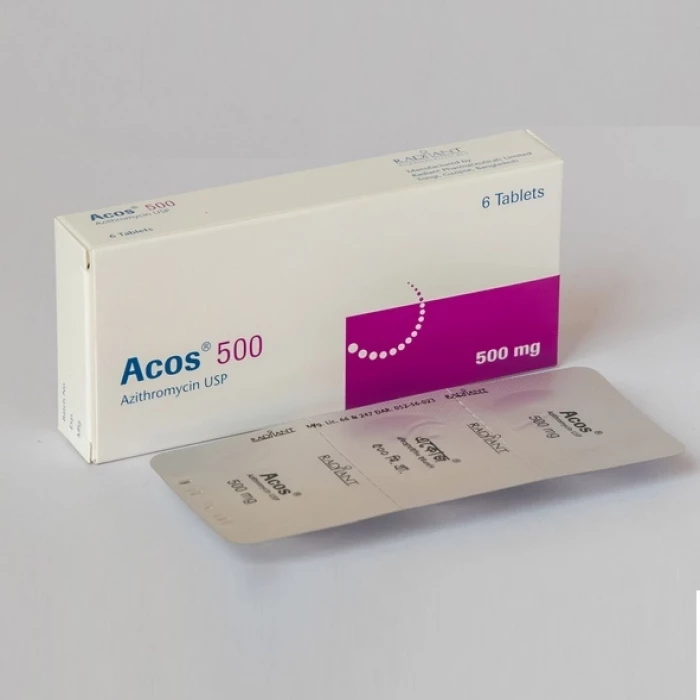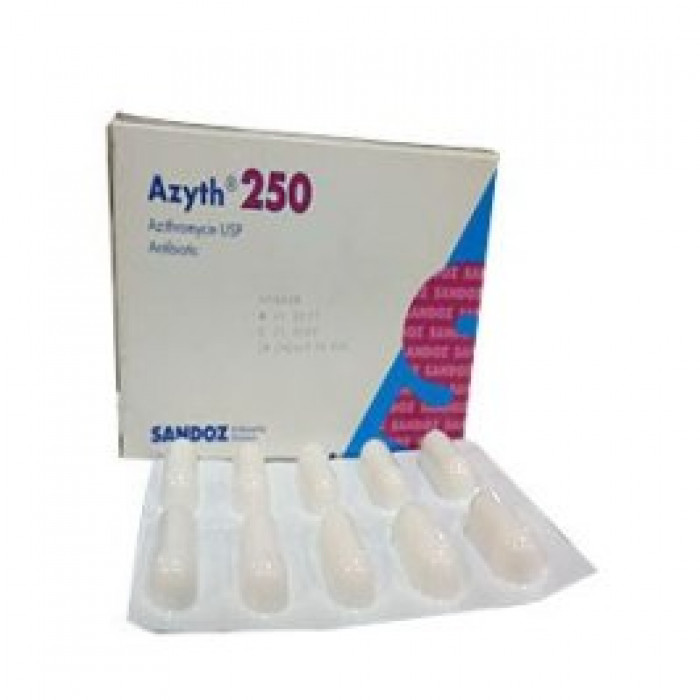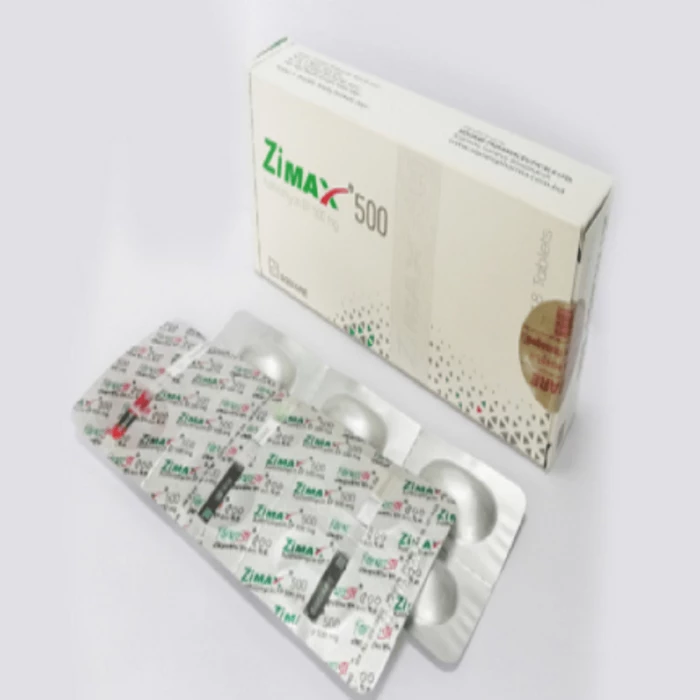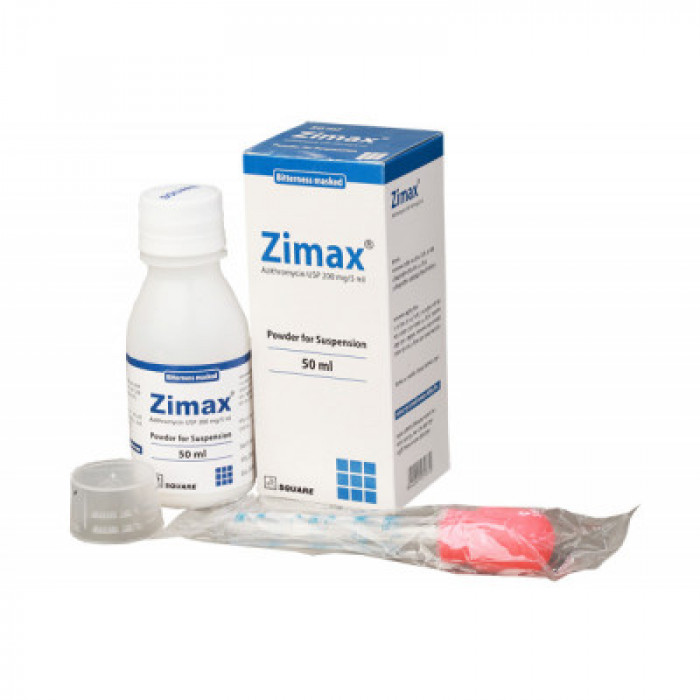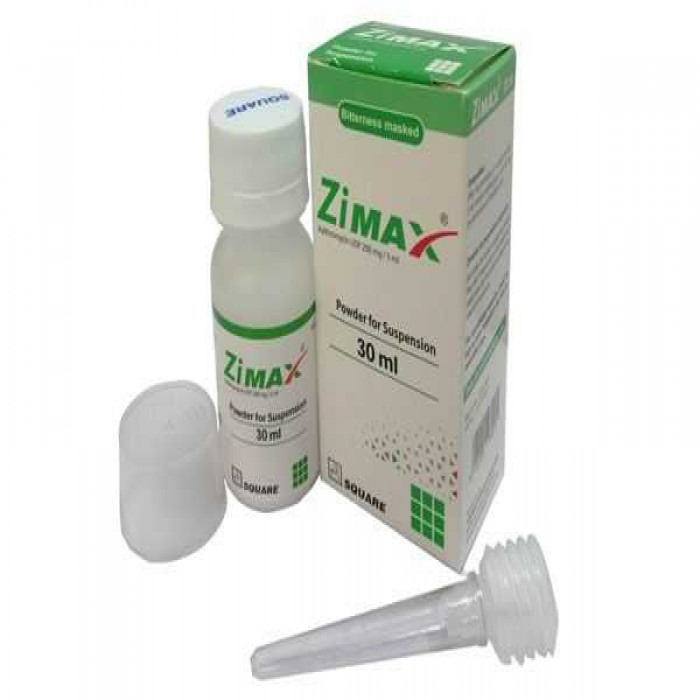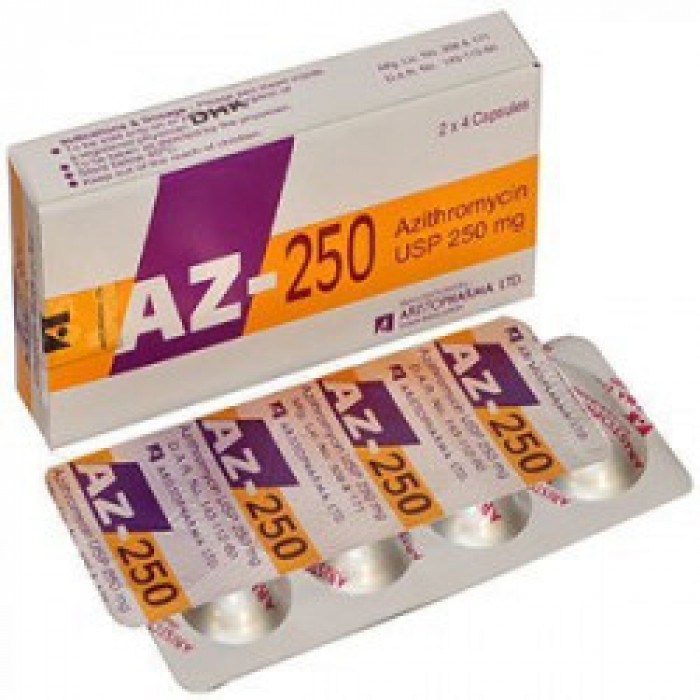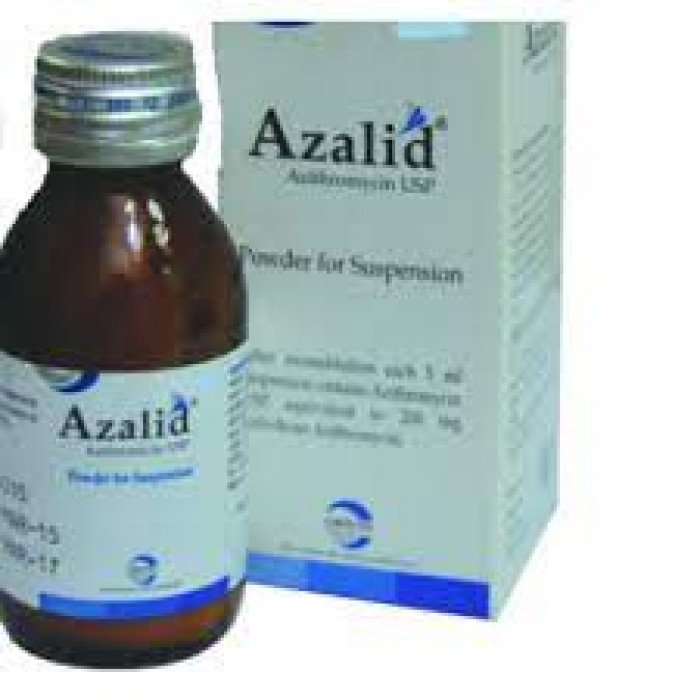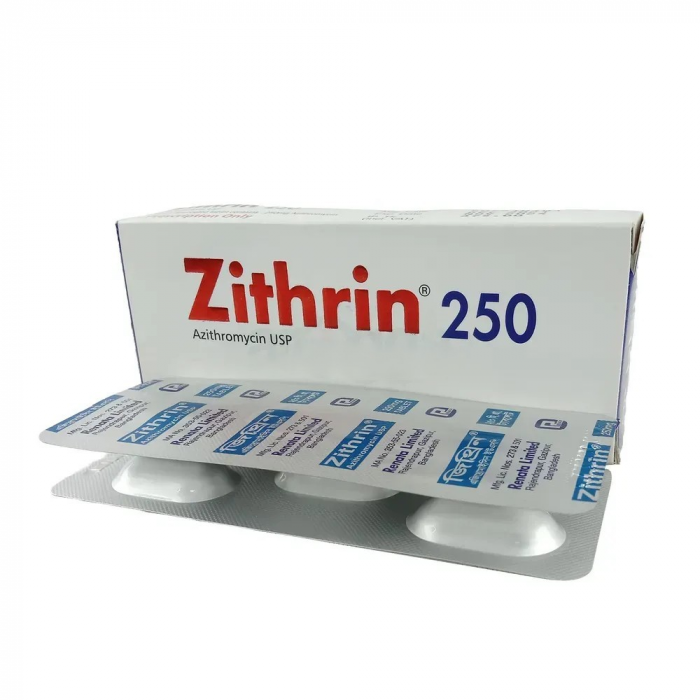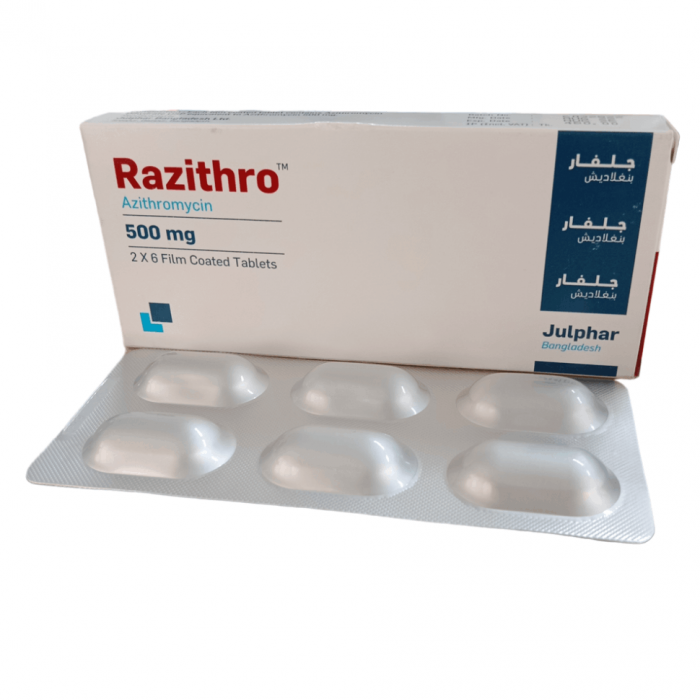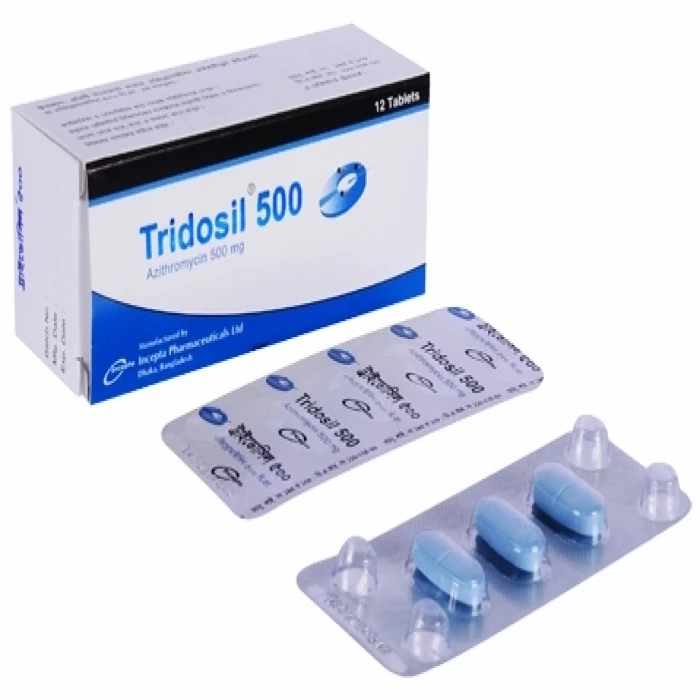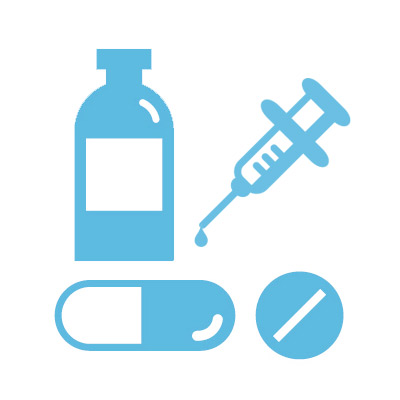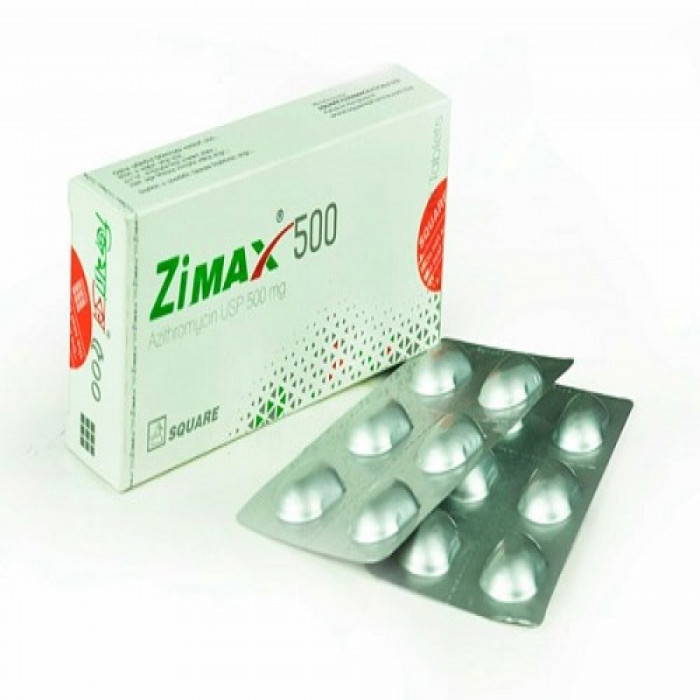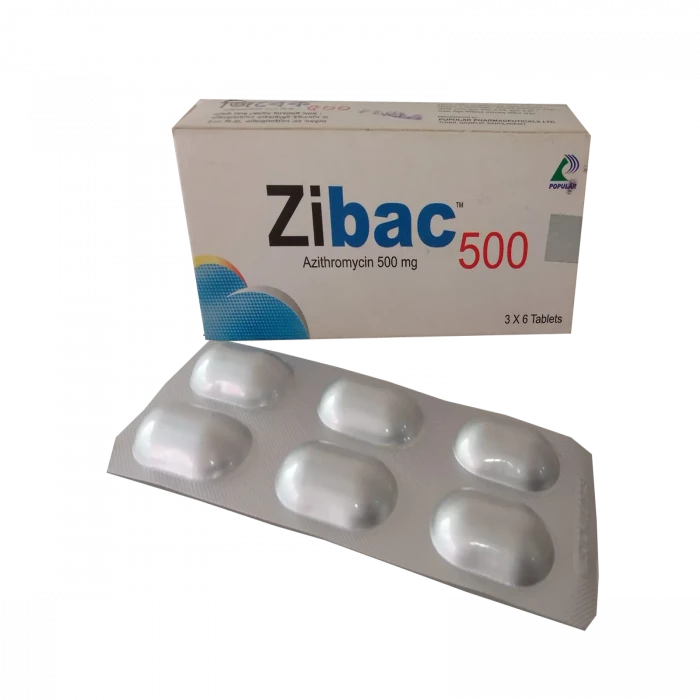
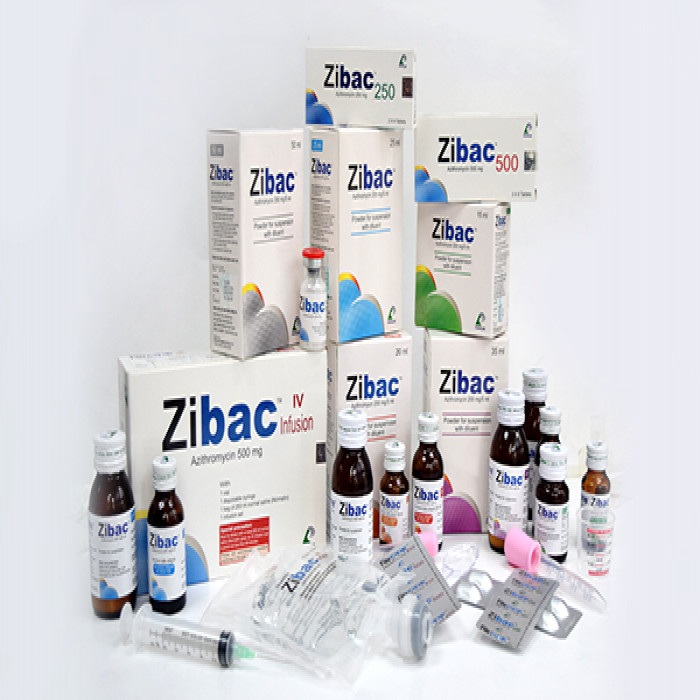
✔ 100% Authentic Product
👁️ Currently Viewing 2528
Generic Name: Azithromycin 500mg
Manufacturer/Distributor: Popular Pharmaceuticals Ltd.
Discount
Price: ৳ 257
MRP:
৳
270
5%
Off

100% Genuine Products, Guaranteed

Safe & Secure Payments, Always

Fast, Secure & Efficient Delivery

Proper Packaging
 Cash on Delivery - All over Bangladesh
Cash on Delivery - All over Bangladesh Regular Delivery - 12-24 Hours, Dhaka City* Charge Tk.39-59
Regular Delivery - 12-24 Hours, Dhaka City* Charge Tk.39-59 Regular Delivery - 24-48 Hours, Other Cities* Charge Tk.99-110
Regular Delivery - 24-48 Hours, Other Cities* Charge Tk.99-110
 ফ্রি ডেলিভারিঃ - ৯৯৯ টাকা+ অর্ডারে, ঢাকা
শহরে
ফ্রি ডেলিভারিঃ - ৯৯৯ টাকা+ অর্ডারে, ঢাকা
শহরে ফ্রি ডেলিভারিঃ - ২৯৯৯ টাকা+ অর্ডারে, ঢাকার
বাহিরে
ফ্রি ডেলিভারিঃ - ২৯৯৯ টাকা+ অর্ডারে, ঢাকার
বাহিরে
100% Genuine Products, Guaranteed
Safe & Secure Payments, Always
Fast, Secure & Efficient Delivery
Proper Packaging
 Cash on Delivery - All over Bangladesh
Cash on Delivery - All over Bangladesh Regular Delivery - 12-24 Hours, Dhaka City* Charge Tk.39-59
Regular Delivery - 12-24 Hours, Dhaka City* Charge Tk.39-59 Regular Delivery - 24-48 Hours, Other Cities* Charge Tk.99-110
Regular Delivery - 24-48 Hours, Other Cities* Charge Tk.99-110 ফ্রি ডেলিভারিঃ - ৯৯৯ টাকা+ অর্ডারে, ঢাকা
শহরে
ফ্রি ডেলিভারিঃ - ৯৯৯ টাকা+ অর্ডারে, ঢাকা
শহরে ফ্রি ডেলিভারিঃ - ২৯৯৯ টাকা+ অর্ডারে, ঢাকার
বাহিরে
ফ্রি ডেলিভারিঃ - ২৯৯৯ টাকা+ অর্ডারে, ঢাকার
বাহিরে
✅ Description:
Indications of Zibac 500 mg Tablet
An antibiotic called Zibac 500 is used to treat several bacterial infections in both adults' and children's eyes, skin, lungs, ears, nose, and throat. Additionally, it works well against typhoid fever and a few STDs, including gonorrhea. A broad-spectrum antibiotic, such as Zibac 500, can effectively destroy a variety of gram-positive bacteria, and certain gram-negative bacteria, as well as other pathogens.
Pharmacology of Zibac 500 mg Tablet
Microbiology: Azithromycin acts by binding to the 50S ribosomal subunit of susceptible microorganisms and, thus, interfering with microbial protein synthesis. Nucleic acid synthesis is not affected. Azithromycin has been shown to be active against most isolates of the following microorganisms, both in vitro and in clinical infections:
Aerobic and facultative gram-positive microorganisms: Staphylococcus aureus, Streptococcus agalactiae, Streptococcus pneumoniae, Streptococcus pyogenes
Aerobic and facultative gram-negative microorganisms: Haemophilus ducreyi, Haemophilus influenzae, Moraxella catarrhalis, Neisseria gonorrhoeae
Other microorganisms: Chlamydia pneumoniae, Chlamydia trachomatis , Mycoplasma pneumoniae , Betalactamase production should have no effect on azithromycin activity.
Aerobic and facultative gram-positive microorganisms: Streptococci (Groups C, F, G), Viridans group streptococci
Aerobic and facultative gram-negative microorganisms: Bordetella pertussis, Legionella pneumophila
Anaerobic microorganisms: Peptostreptococcus species, Prevotella bivia
Zibac 500 mg Tablet Dosage & Administration
Oral-
Adult:
500 mg once daily orally for 3 days or 500 mg once on day 1, then 250 mg once on days 2-5 for 4 days.
For sexually transmitted diseases caused by Chlamydia trachomatis in adults, the dose is 1 gm given as a single dose or 500 mg once on day 1, followed by 250 mg once daily for the next 2 days may also be given.
Children:
10 mg/kg body weight once daily for 3 days for children over 6 months
200 mg (1 teaspoonful) for 3 days if body weight is 15-25 kg
300 mg (1½ teaspoonfuls) for 3 days if body weight is 26-35 kg; 400 mg (2 teaspoonfuls) for 3 days if body weight is 36-45 kg.
In typhoid fever, 500 mg (2½ teaspoonfuls) once daily for 7-10 days is given. Azithromycin Injection (For IV Infusion only): The recommended dose of Azithromycin for injection for the treatment of adult patients with community-acquired pneumonia due to the indicated organisms is:
500 mg as a single daily dose by the intravenous route for at least two days. Intravenous therapy should be followed by Azithromycin by the oral route at a single, daily dose of 500 mg, administered as two 250-mg tablets to complete a 7 to 10-day course of therapy. The timing of the switch to oral therapy should be done at the discretion of the physician and in accordance with clinical response.
The recommended dose of Azithromycin for the treatment of adult patients with pelvic inflammatory disease due to the indicated organisms is 500 mg as a single daily dose by the intravenous route for one or two days. Intravenous therapy should be followed by Azithromycin by the oral route at a single, daily dose of 250 mg to complete a 7-day course of therapy. The timing of the switch to oral therapy should be done at the discretion of the physician and in accordance with clinical response. If anaerobic microorganisms are suspected of contributing to the infection, an antimicrobial agent with anaerobic activity should be administered in combination with Azithromycin.
The safety and effectiveness of azithromycin for injection in children or adolescents under 16 years have not been established.
Interaction of Zibac 500 mg Tablet
Azithromycin absorption is reduced in presence of food and antacid. In patients receiving ergot alkaloids Azithromycin should be avoided because of the possibility of ergotism resulting from the interaction of Azithromycin with the cytochrome P-450 system. As macrolides increase the plasma concentration of digoxin and cyclosporin, caution should be exercised while co-administration. There have been no drug interactions between Azithromycin and Warfarin, Theophylline, Carbamazepine, Methylprednisolone, or Cimetidine.
Contraindications of Zibac 500 mg Tablet
Zibac 500 mg Tablet is contraindicated in patients hypersensitive to Azithromycin or any other macrolide antibiotic. Co-administration of ergot derivatives and Azithromycin is contraindicated. Zibac 500 mg Tablet is contraindicated in patients with hepatic diseases.
Zibac 500 mg Tablet Side Effects
Zibac 500 mg Tablet is well tolerated with a low incidence of side effects. The side effects include nausea, vomiting, abdominal discomfort (pain/cramps), flatulence, diarrhea, headache, dizziness, and skin rashes, and are reversible upon discontinuation of therapy.
Pregnancy & Lactation
The pregnancy Category of Azithromycin is B. Animal reproduction studies have demonstrated that Azithromycin has no evidence of harm to the fetus. There are no adequate and well-controlled studies on pregnant women. Since animal reproduction studies are not always predictive of human response, Zibac 500 mg Tablet should be used during pregnancy only if adequate alternatives are not available. It is not known whether Azithromycin is secreted in breast milk. So, caution should be exercised when Zibac 500 mg Tablet is administered to nursing women.
Precautions & Warnings
As with any antibiotic, observation for signs of superinfection with non-susceptible organisms, including fungi, is recommended. No dose adjustment is needed in patients with renal impairment.
Storage Conditions of Zibac 500 mg Tablet
Store below 30° C in a cold, dry, and light-protected location. Keep out of children's reach.
⚠️Disclaimer:
At ePharma, we’re committed to providing accurate and accessible health information. However, all content is intended for informational purposes only and should not replace medical advice from a qualified physician. Please consult your healthcare provider for personalized guidance. We aim to support, not substitute, the doctor-patient relationship.




